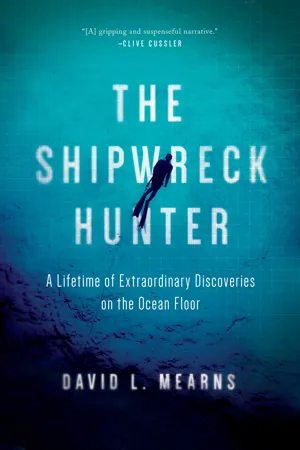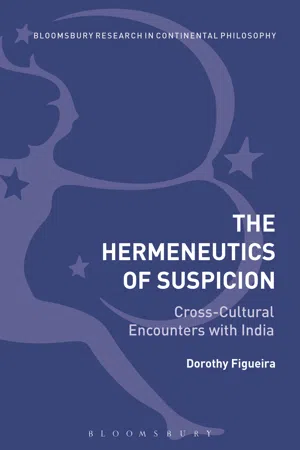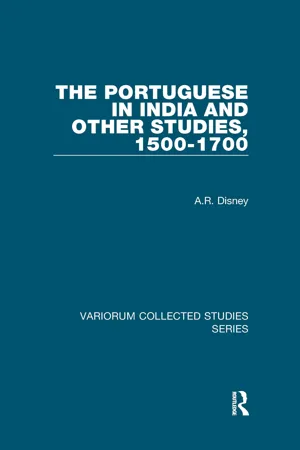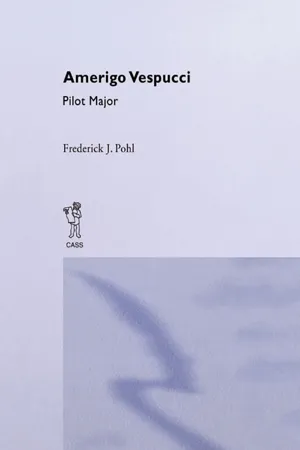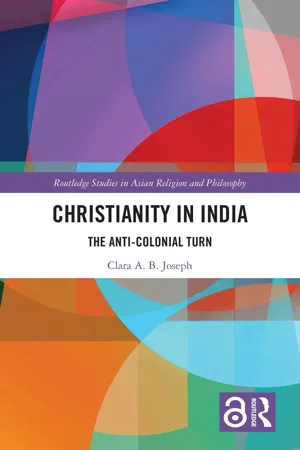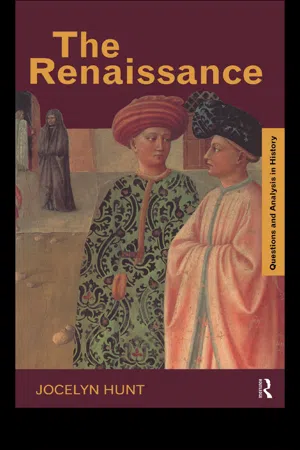History
Vasco da Gama
Vasco da Gama was a Portuguese explorer who led the first maritime expedition from Europe to India, opening up a sea route that connected Europe with the lucrative spice trade of the East. His successful voyage in 1498 established Portugal's dominance in the Indian Ocean and paved the way for future European colonial expansion and trade in the region.
Written by Perlego with AI-assistance
Related key terms
Related key terms
1 of 4
Related key terms
1 of 3
9 Key excerpts on "Vasco da Gama"
- eBook - ePub
- K.G. Jayne(Author)
- 2023(Publication Date)
- Routledge(Publisher)
Vasco da Gama, 1497-1524
Passage contains an image
CHAPTER V BY SEA TO INDIA: THE START
BARTHOLOMEU DIAS had found the sea-gates of the Orient; it remained for some mariner of equal daring to force them open. Wars with Castile and the death of King John II. had delayed this venture for a decade, but Manoel, who succeeded to the throne in 1495, did not long hesitate to resume the historic mission bequeathed to his country by Prince Henry the Navigator. This had now come to mean the search for a sea-route to India.The twofold purpose of the quest was explained with admirable brevity by the first Portuguese sailor who disembarked on Indian soil. “Christians and spices,” he replied, when asked what had brought him and his comrades so far.All those who still cherished the crusading ideals of a bygone age dreamed of an alliance with Prester John’s empire and with the other Catholic powers which were believed to exist on the other side of the world. This accomplished, the chivalry of Portugal would lead the united hosts of European and Asiatic Christendom in a campaign for the destruction of Muhammadanism. Others hoped to divert for their own profit the trade in Indian wares, and especially in spices, which had hitherto filled the treasuries of Genoa, Venice and Ragusa.Shortly after his accession King Manoel summoned to his court at Estremoz the son of a certain Estevão da Gama, who had been chosen to lead the way to India but had died while the preparations for the voyage were still incomplete. His third son Vasco was appointed in his stead to the office of Captain-Major (Capitão-Mór) or Commander-in-chief. Castanheda states that the honour was first offered to Vasco’s eldest brother, Paulo da Gama, who declined it on the ground of ill-health.Vasco da Gama was born about 1460 in the town of Sines, of which his father was Alcaide-Mór or Civil Governor. Sines, one of the few seaports on the Alemtejo coast, consisted of little more than a cluster of whitewashed, red-tiled cottages, tenanted chiefly by fisherfolk. Its inhabitants could hardly fail to be men of the sea, for a waste of barren sand, inhospitable as the unreclaimed Landes of Southern France, stretched for leagues behind the town and made all agriculture unprofitable. But westward lay the endless Atlantic, where the men of Sines could reap a surer harvest than any they could wring from the dunes, and on the north a little haven sheltered by granite cliffs gave a secure berth to their fishing-fleet. Born and bred in such an environment, Vasco da Gama was also fated to follow the sea. When he was chosen for the Indian voyage, he was already an expert navigator, about thirty-six years of age and unmarried. Courage, ambition, pride and unwavering steadfastness of purpose were the bedrock of his character. Although on occasion he might unbend so far as to join his sailors in a hornpipe, he allowed no relaxation of discipline; and although he made promotion depend exclusively on merit, never on the fortune of birth—“preferring,” as Corrêa puts it, “a low man who had won honour with his right arm to a gentleman Jew”—he was at heart an aristocrat. - eBook - ePub
- David L Mearns(Author)
- 2018(Publication Date)
- Pegasus Books(Publisher)
fidalgo of the royal household, when in 1497 he was chosen by the Portuguese King Dom Manuel I to be captain-major of Portugal’s most important exploration east to find the direct sea route to India. Since their discovery of Madeira Island in 1418 and the Azores archipelago in 1427, Portuguese ships commanded by their most skilled explorers and navigators had ventured south into the Atlantic Ocean, reaching successively distant locations down the west coast of Africa, in a quest to conquer new lands and to find Christian allies who could help in their costly conflict against the Moors. In 1488, a small Portuguese fleet commanded by Bartolomeu Dias finally rounded the Cape of Good Hope at the southern tip ofAfrica, but it ventured no further because his crew became frightened and refused to go on. The Portuguese knew that India was a land rich in valuable spices, especially pepper, and it was the ultimate objective in their plans for economic and territorial expansion. However, it wasn’t until the ambition of Dom Manuel was matched by the bravery of Vasco da Gama that they reached their goal.Da Gama’s discovery of the sea route to India in 1498, with an armada of just three ships, has been described by historians as one of the most important events recorded in the history of mankind. This daring and courageous exploit of seamanship and navigation gave Portugal virtually total control of the rich spice trade with India. By the middle of the sixteenth century they dominated the world’s trade, with a hundred-year monopoly in the Indian Ocean over their Dutch and English rivals. Along with the discovery of Brazil in 1500 by Pedro Álvares Cabral, it was one of the crowning achievements in Dom Manuel’s reign, helping to cement his reputation as ‘Manuel the Fortunate’ and one of Portugal’s most important rulers ever. For da Gama, it meant more riches and titles, including being named the first Admiral of the Indies. - eBook - ePub
Navigations
The Portuguese Discoveries and the Renaissance
- Malyn Newitt(Author)
- 2023(Publication Date)
- Reaktion Books(Publisher)
6
Vasco da Gama, PEDRO ÁLVARES CABRAL AND RENAISSANCE PORTUGAL
I t is often held that the Renaissance was a period when individual attainment was recognized and individuals of genius inscribed their personalities and their fame on the European cultural memory. The great Portuguese navigators remain, for the most part, an exception and, although after their deaths chroniclers and poets celebrated their achievements, remarkably little is known about them from contemporary sources. The same is true of Columbus, though the fog of uncertainty that still hangs over him was not so much due to the lack of contemporary documents relating to his life but rather to misleading and cryptic comments deriving from his own pen and from the desire of obsessive seekers after conspiracies to find in his life an alternative to the accepted historical narrative.1Vasco da Gama Emerges from Obscurity
As mentioned earlier, one of the major difficulties met by anyone writing about Bartolomeu Dias’s life is that there were several men active at that time who had the same name. Similar confusion surrounds the early life of Vasco da Gama. Sanjay Subrahmanyam outlines the problem of what he calls da Gama’s ‘doppelgängers’ – men living at the same time with the same name:One of these, a squire (escudeiro) to the kings Dom Duarte and Dom Afonso V , lived in Elvas, and had property in Olivença, but died in 1496. At least two others of the same name can be found in Olivença in the 1480s, besides one other in Elvas and one in Évora.2And it appears that da Gama’s own father had an illegitimate son, born before his marriage, whom he called Vasco, so that the great commander had a half-brother with exactly the same name as himself. The waters of history are muddied by other doppelgängers. There were a number of men in the early sixteenth century called Afonso de Albuquerque and no fewer than seven who bore the name Fernão de Magalhães (Magellan)! - eBook - ePub
- Edgar Prestage(Author)
- 2021(Publication Date)
- Johnston Press(Publisher)
CHAPTER XII THE FIRST VOYAGE OF Vasco da GamaKING MANOEL the Fortunate succeeded to the throne of Portugal in October 1495 at the age of twenty-six, and, since he inherited with the realm the enterprise of the discovery of the sea route to India at which his countrymen had laboured for at least half a century, he caused it to be debated in the Royal Council the following December. Most of the members opposed the undertaking because India was a distant country to conquer;1 they feared that the attempt would be beyond the strength of Portugal, and foresaw that it would excite the jealousy of other powers, especially of Venice, whose commercial interests would be thereby prejudiced. Some councillors, however, held a contrary opinion, and, as their arguments fitted in with the King’s desire, he endorsed them. After all, Venice, in fear of the Turk, could only use the arm of intrigue, and no active opposition from elsewhere was likely.He conferred the leadership of the expedition on Vasco da Gama, a gentleman of his household, who had been indicated for the post in the preceding reign. The year of his birth, like that of a distant kinsman, the poet Camoens, who immortalised him in The Lusiads , is not certainly known, but it may have been 1460; the place was Sines, a seaport in the south of Portugal of which his father had been Alcaidemór . We know little of his education and early life, but his selection to complete the work of Bartholomew Dias may be regarded as evidence that he possessed training in naval matters as well as strength of character. Garcia de Resende asserts that the King trusted him because he had served in his fleets, and in 1492 had been employed to seize the French vessels lying in the ports of Setubal and the Algarve as a reprisal for an act of piracy, while Mariz, a later writer, says that he had as good an acquaintance with navigation as the best pilots. This is certainly an exaggeration, but as we find him landing near the Cape to determine the latitude, it is clear that he did not lack technical knowledge. This was not, however, the only qualification he needed, for discovery was not his main business; he went as ambassador to establish relations between King Manoel and Indian rulers for the sake of Christianity and commerce. Contemporary writers describe him as a brave, tenacious and authoritative man, proud and irascible; the Venetian envoy, Leonardo da Cha Masser, who knew him, calls him violent. In spite of such natural defects, however, he shewed patience as well as firmness in dealing with Orientals at Calicut and at the ports of call, and these qualities enabled him to control and keep the confidence of his crews in a voyage of unheard-of length through almost unknown seas. His fleet consisted of four vessels: the flagship St. Gabriel , commanded by himself, and piloted by Pero de Alemquer; the St. Raphael and Berrio , of which his brother Paul and Nicolas Coelho were captains, with John de Coimbra and Pero de Escolar as pilots, and a store-ship. The first two were square-rigged vessels of shallow draught, built for the voyage under the direction of Bartholomew Dias, and the timber for them had been cut in the royal forests before John II died; the Berrio was a lateen-rigged caravel of the class used in the Henrician expeditions. The tonnage of the St. Gabriel and St. Raphael is stated by contemporary historians as being from 100 to 120 tons, that of the Berrio as 50, while the store-ship seems to have been of 200 tons; but the ‘ton’ at that time was a different measure from what it is now, and if we multiply the figures by two we shall not be exaggerating them; even so, the vessels were small and of set purpose, according to Duarte Pacheco, because of the banks and shoals of the African coast. The St. Gabriel and the St. Raphael had three masts, with castles fore and aft, and square sterns, and they bore the figure of their patron saint at the bow. There is a coloured drawing of the vessels in the sixteenth-century MS. Memoria das Armadas at the Lisbon Academy of Sciences. The armament consisted of twenty guns, some of them breech-loaders; the officers were clad in armour and carried swords; the men wore leather jerkins and breastplates, and had cross-bows, axes and pikes. Everything had been carefully thought out and great expense incurred, but according to the Roteiro ,1 - eBook - ePub
The Hermeneutics of Suspicion
Cross-Cultural Encounters with India
- Dorothy Figueira(Author)
- 2015(Publication Date)
- Bloomsbury Academic(Publisher)
4Vasco da Gama, the Meaning of Discovery, and the Hermeneutics of Suspicion
Viemos buscar christãos e especiaria.Diario da Viagem de Vasco da Gama1I. The voyage
Voyagers carried with them royal commissions mandating that they “discover and gain” (Washburn 1962: 14).2 It is no surprise then that the anonymous first-hand account of Vasco da Gama’s first voyage, the Roteiro da Viagem de Vasco da Gama,3 begins in the following manner: “In the name of God. Amen. In the year 1497, to King Dom Manuel, the first of this name in Portugal, sent out (mandou) to discover (descobrir), four ships,4 which went in search of spices.…” The narrator uses the verb “discover” initially in an intransitive sense. The ships were sent in search of spices. Manuel, however, sent Gama to discover. What he was meant to discover remains unspecified in this first articulation. What was, in fact, discovered and what it even meant “to discover” unfolds in the course of Gama’s voyage. The verb “discover” is used strategically in this initial passage. In a letter of October 18, 1498, Gama wrote that he had reached the terra firma that was known to the ancients (O’Gorman 1961: 99–100). Gama’s terminology here suggests that he understood the act of discovery as entailing the arrival in lands that were known by reputation and past visitation. In this sense, the term “discover” meant uncovering land that was hidden but known to exist. Columbus also would have used the term “discover” in this sense (Washburn 1962: 12).5 The important point to be gleaned from this terminology was that the Portuguese saw themselves to be on a mission and believed that they were in control.Gama set sail from Lisbon on July 8, 1497. He carried with him letters of introduction from Manuel to be given to Prester John (Uebel 2005: 195–6). Routing themselves far out into the Atlantic Ocean, they passed the Cape of Good Hope on November 16. When they arrived in Mozambique, they anchored away from the settlement, off a small island, to avoid detection. Here, removed from the prying eyes of the natives, they celebrated mass. The sultan, learning of their presence, invited a representative, one of Gama’s captains, Nicolão Coelho, to his palace. They met and duly exchanged gifts. The sultan had received the impression that the Portuguese were white Moors who had come from Turkey.6 - A.R. Disney(Author)
- 2023(Publication Date)
- Routledge(Publisher)
One of the most frequently cited stories of this kind concerns a sequence of outrages allegedly committed by Vasco da Gama and his men at Calicut, during the Admiral’s second voyage to India in 1502–3. There is a well-worn version of this story, to which historians writing in English about the Portuguese in India seem to be especially attracted. Stanley Wolpert, in his standard history of India, tells it as follows:Vasco da Gama returned with a fleet of fifteen heavily armed ships in 1502 and blasted the port [Calicut] until it was all but reduced to rubble. Then he captured several Muslim vessels and cut off the hands, ears and noses of some eight hundred “Moorish” seamen, sending the lot to the zamorin’s palace for his highness’s “curry.” Such orgies of piracy and plunder served to secure Portugal’s direct route to the East and assured an uninterrupted supply of pepper and cloves.1Almost a century before Wolpert, R.S.Whiteway had described these outrages in very similar terms in his classic history of the Portuguese presence in India in the early sixteenth century.2 O.K.Nambiar did likewise in the early 1960s, apparently taking his account secondhand from the notoriously unreliable F.C.Danvers.3 More recently, Bailey W. Diffie and George D.Winius have also repeated the story, once again saying essentially the same as Wolpert, though somewhat more judiciously.4 So what are the origins of the story, and is it really credible?Vasco da Gama’s second visit to India is relatively well documented, there being at least ten separate contemporary or near-contemporary published accounts of varying quality, detail and accuracy, that describe it. The longest of these accounts was written by Tomé Lopes, a Portuguese scribe aboard one of Gama’s ships, who personally witnessed most of what he narrated. Lopes probably composed the bulk of his account during the voyage itself, and was clearly a man of recognised ability in his profession — he was subsequently appointed keeper of the royal archives in Lisbon. His narrative now survives only through a near-contemporay Italian translation, originally prepared for the information of the Soderini family in Florence, and later published in Venice by the celebrated Giovanni Ramusio in 1550.5- eBook - ePub
Amerigo Vespucci Pilot Cb
Amerigo Vespucci Pilot Ma
- Frederick Julius Pohl(Author)
- 2013(Publication Date)
- Routledge(Publisher)
Pedro Alvares Cabral had sailed from Lisbon on the ninth of March, 1500, with a total of sixteen ships, thirteen of them powerfully armed. Two of the ships did not accompany him beyond the Cape Verde Islands. His was the second Portuguese expedition to India, and he was sent forth as a conqueror, to avenge the mistreatment Vasco da Gama had received and to establish trading posts by force if necessary. In addition to merchants, he carried with him Franciscan friars and skilled gunners to encourage each other and to supplement each other’s work. He had with him Bartolomeu Dias, his brothers Diogo and Pero, and several old sailors who had been to India, such as Pero Escobar, Alfonso Lopes, and Nicolau Coelho.The presence of these men had a bearing on the route Cabral took, for it meant that he had the benefit of accumulated experience and that his course from the Cape Verde Islands a little south of west for a great distance into the ocean before attaining the latitude of the Cape of Good Hope was by deliberate intention, not the result of a storm or haphazard navigation.There was distinct continuity of experimentation in the three Portuguese voyages: those of Bartolomeu Dias, Vasco da Gama, and Cabral. Dias had followed the coast of Africa until within a few degrees of the Cape of Good Hope and had then found himself compelled by winds and currents to leave the coast and fetch a course to the southwest and then south in order to attain latitude, and then had gone east beyond the cape, without sighting it. Da Gama was guided by the same chief pilot, Pedro de Alemquer, who had directed Dias. He was accompanied by Bartolomeu Dias as far as Cape Verde, and Diogo Dias was clerk on his flagship. Da Gama, however, did not follow the course Bartolomeu Dias had taken. He was well advised not to do so. Instead, to avoid dangerous winds from the west blowing toward Africa near the Cape of Good Hope, he sailed a little south of west from the Cape Verde Islands to mid-ocean and then attained latitude, but not enough, for he came up to the west coast of Africa some distance short of the cape and thence only by much traverse sailing in the face of terrible gales was able to get around the cape. - eBook - ePub
Christianity in India
The Anti-Colonial Turn
- Clara A.B. Joseph(Author)
- 2019(Publication Date)
- Routledge(Publisher)
Ravenstein’s A Journal of the First Voyage of Vasco da Gama, 1497–1499, issued by the Hakluyt Society in 1898 (based on the anonymous “Roteiro” or Journal); and third, Glenn Joseph Ames’ Em nome de Deus: The Journal of the First Voyage of Vasco da Gama to India, 1497–1499, published by Brill in 2009 (based on the anonymous “Roteiro” [rutter] or Journal). The three editions record, among other things, encounters between Gama’s crew and “Indian Christians.” For the Portuguese, meeting the Indian Christians in the fifteenth century was momentous. The figure of Prester John of India, that Christian king, was still in the collective memory of the Catholic Portuguese. They had not forgotten that Europe had waited, to their own detriment, for reinforcements from Prester during the Crusades. Their hope in him had not waned, even when the non-Christian East manifested itself as threatening Muslims. As late as 1492, Christopher Columbus wrote, Acting on the information that I had given to your Highnesses touching the lands of India, and respecting a Prince who is called Gran Can, which means in our language King of Kings, how he and his ancestors had sent to Rome many times to ask for learned men of our holy faith to teach him, and how the Holy Father had never complied, insomuch that many people believing in idolatries were lost by receiving doctrine of perdition: Your Highnesses, as Catholic Christians and Princes who love the holy Christian faith, and the propagation of it, and who are enemies to the sect of Mahoma and to all idolatries and heresies, resolved to send me, Cristobal Colon, to the said parts of India to see the said princes, and the cities and lands, and their disposition, with a view that they might be converted to our holy faith; and ordered that I should not go by land to the eastward, as had been customary, but that I should go by way of the west, whither up to this day, we do not know for certain that any one has gone - eBook - ePub
- Jocelyn Hunt(Author)
- 2005(Publication Date)
- Routledge(Publisher)
1 )). There are obvious links to be made between the spirit of curiosity and questioning which animated the thinkers of the Renaissance and the journeys of travellers to distant parts of the world. Exploration was stimulated by the discovery and interpretation of classical texts about the world. The new scientific ideas of the Renaissance informed and were affected by these explorations, and the doubts already expressed about the teachings of the Church were strengthened when the world patently was not as those teachings had always claimed. At the same time, however, the Catholic Church used the new lands as an opportunity to rejuvenate their message. One of the important developments of the Catholic Reformation, the formation of the Society of Jesus, was the result of St Ignatius Loyola’s determination to convert all the nations of the world. New economic and political developments, and the status of rulers, were also affected by the amount of territory they held or claimed, whether far away or not, as can be seen in the extraordinary rise of Portugal. While these links are clear, at the same time, the voyages of exploration were the product of much older processes, and arose from motives which do not share the supposed values of the Renaissance.Throughout the fifteenth century the Portuguese royal family, the House of Avis, sent exploratory expeditions south along the coast of Africa. These voyages were as much a crusade as a scientific study. Beginning in 1418, following the victory over the Moors at Ceuta in 1415, the aim was to reduce the power of the Muslim rulers, by establishing the extent of their dominions to make possible an attack from the rear, and by cutting off the trade, particularly in West African gold which was one of their strengths. Progress was slow at first. The forbidding Cape Bojador (26° N) was not rounded until 1433, and by 1460 (when Prince Henry ‘the Navigator’, inspiration for these voyages, died) the Portuguese had still only reached Sierra Leone. They did not cross the equator until 1479 or round the southern point of Africa until 1487. The arrival of da Gama in India (1498) was the culmination of a process which had lasted almost a hundred years. Subsequent voyages reached the Spice Islands of the Moluccas, and as far as Japan and China by the middle years of the sixteenth century.By the time the Portuguese arrived in India, they were not the only power involved in overseas exploration. The Castilians, too, had a crusading victory as the inspiration of their first involvement. When, in 1492, the centuries-long Reconquista of the Muslim lands of Spain ended in victory at Granada, Isabella expressed her gratitude to God by sponsoring Columbus to carry out the voyage he had been talking about for ten years. His four voyages between 1492 and 1504 claimed the islands and mainland of Central America for Castile, and provided the bridgehead from which the Spanish took over the empires of Mexico and Peru and were able to rule almost all of Latin America until the nineteenth century. Columbus was not the only Italian employed in exploration by the monarchs of Europe. In the 1490s, Vespucci, a Florentine, travelled both for Spain and for Portugal and John Cabot persuaded Henry VII to sponsor an expedition across the North Atlantic. Twenty years later, Francis I of France authorised a voyage by Giovanni da Verrazzano, which began the interest in North America which France was able to maintain until the late eighteenth century, and which survives in the language and culture of parts of Canada. The extent to which this Italian presence is related to the Renaissance in Italy is a matter of debate. Most of the technical developments which made possible these longer voyages were the result of practical seamanship, rather than theory. (2
Index pages curate the most relevant extracts from our library of academic textbooks. They’ve been created using an in-house natural language model (NLM), each adding context and meaning to key research topics.
Explore more topic indexes
Explore more topic indexes
1 of 6
Explore more topic indexes
1 of 4

